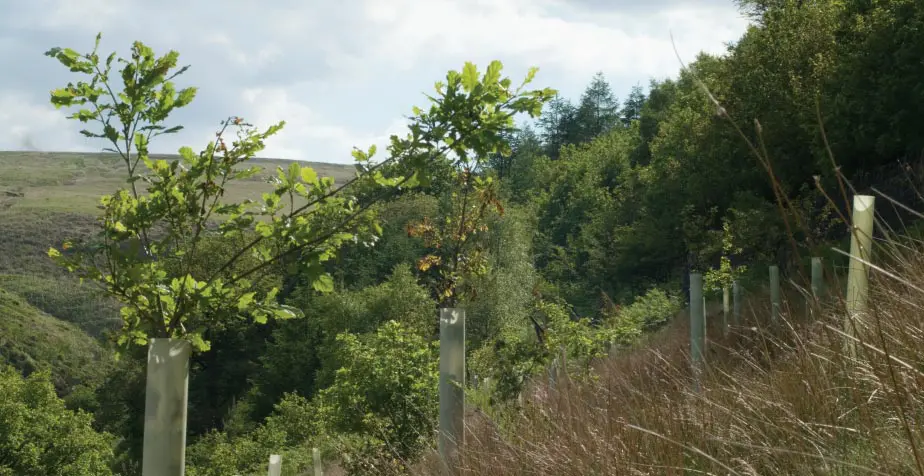Everything You Need to Know About Environmental Credits
Environmental credits are becoming a cornerstone of the UK’s journey toward net-zero and nature recovery. They create a financial value for actions that benefit the environment, allowing landowners to earn income from habitat restoration or carbon storage and enabling developers to meet regulatory requirements.
For UK landowners, developers and sustainability professionals, understanding how these credits work, and how to generate or purchase them, is now essential.
What Are Environmental Credits?
An environmental credit is a tradable unit representing a measurable environmental improvement, such as enhanced biodiversity, stored carbon or reduced nutrient pollution. These credits allow those who create ecological gains to sell them to organisations or developers that need to offset unavoidable impacts. In the UK, three main credit types dominate the market: Biodiversity Net Gain (BNG) credits, nutrient credits, and carbon credits.
Biodiversity Net Gain (BNG) Credits
Biodiversity Net Gain is a legal requirement introduced by the Environment Act 2021 and made mandatory in England in 2024. Most developments must now achieve at least a 10% net gain in biodiversity compared to the pre-development baseline. Developers calculate habitat value using the government’s statutory biodiversity metric and then show how they will create or enhance habitats to meet the target.
If on-site improvements cannot deliver the necessary gain, developers may buy off-site biodiversity units from landowners who have restored or created qualifying habitats.
Landowners can earn Biodiversity Net Gain (BNG) credits by restoring or enhancing habitats and agreeing to manage them for a minimum of thirty years. Comprehensive guidance is available on GOV.UK, and our own resource on energy and environmental management explains how BNG projects integrate with broader sustainability strategies.
Nutrient Credits and Nutrient Neutrality

Nutrient credits address a different challenge: excess nitrogen and phosphorus that threaten rivers, estuaries and coastal waters. In catchments designated by Natural England, new housing or commercial projects must demonstrate “nutrient neutrality,” meaning they will not increase nutrient pollution. Developers calculate their nutrient budget and, if an increase is unavoidable, must mitigate it.
One recognised route is purchasing nutrient credits from schemes that create wetlands, improve wastewater treatment or employ other measures to reduce nutrient runoff. Natural England’s Nutrient Mitigation Scheme sets the framework for these transactions, with many credits required to remain effective for decades to guarantee ecological benefit.
Landowners who can provide long-term mitigation, such as converting farmland to wetland, may secure a reliable income stream while contributing to water quality improvements and meeting national conservation targets.
Carbon Credits in the UK
Carbon credits are the most established form of environmental credit and play a vital role in meeting the UK’s legally binding net-zero target by 2050. A single carbon credit represents the removal or avoidance of one tonne of carbon dioxide equivalent.
Projects that qualify include woodland creation, peatland restoration and emerging soil-carbon initiatives. The Woodland Carbon Code and the Peatland Code provide rigorous standards for measurement, monitoring and permanence. Landowners must register their projects, undergo independent validation and demonstrate “additionality”, proof that the carbon savings would not have occurred without the project.
Companies purchase these credits voluntarily to offset emissions and strengthen their sustainability credentials. As highlighted in the UK Government’s Voluntary Carbon and Nature Market Integrity Principles, credible verification and transparent monitoring are crucial to avoid greenwashing.
How Environmental Credits Support UK Policy
Environmental credits are closely tied to national and local regulation. Mandatory BNG is now embedded in English planning law, nutrient neutrality rules protect sensitive waterways and carbon markets underpin the UK’s net-zero strategy. Together, these mechanisms mobilise private finance for nature recovery and climate action, helping the country meet the goals of the Environment Act and the Paris Agreement without relying solely on public funding.
For developers, early integration of environmental credits into project planning reduces the risk of delays or refusals. For landowners, it opens new revenue opportunities while safeguarding natural capital for future generations.
Opportunities and Considerations for Landowners

Engaging with these markets requires careful preparation. Landowners must assess the ecological potential of their land, secure long-term legal agreements such as conservation covenants, and commit to decades of monitoring and maintenance. Developers need to factor the cost of credits into their budgets and ensure that any credits they purchase are high-quality and properly verified.
While the potential returns are attractive, woodland carbon credits recently averaged around £25 per tonne of CO₂ and nutrient credits can command several thousand pounds per kilogram of nitrogen, long-term stewardship and legal clarity are critical to success.
The Future For Environmental Credits
The UK market for environmental credits is evolving rapidly. New codes for soil carbon, hedgerows and agroforestry are under development, potentially broadening the range of qualifying projects. Habitat banking platforms are becoming more sophisticated, making it easier for developers to source biodiversity units. Catchments affected by nutrient neutrality rules are likely to expand, creating new demand for mitigation credits.
As standards tighten and integrity frameworks mature, high-quality credits will command a premium, rewarding landowners and developers who adopt best practices and rigorous monitoring from the outset.
Environmental credits are transforming how the UK finances nature recovery and climate action. For landowners they present an opportunity to diversify income while protecting natural assets. For developers they provide a vital mechanism to meet planning and environmental obligations. For sustainability professionals they offer a growing field in which expertise is in high demand.
To explore how environmental credits could benefit your project or estate, to our team about the latest opportunities. With careful planning and a commitment to high standards, environmental credits can deliver lasting value for both the planet and your business.


